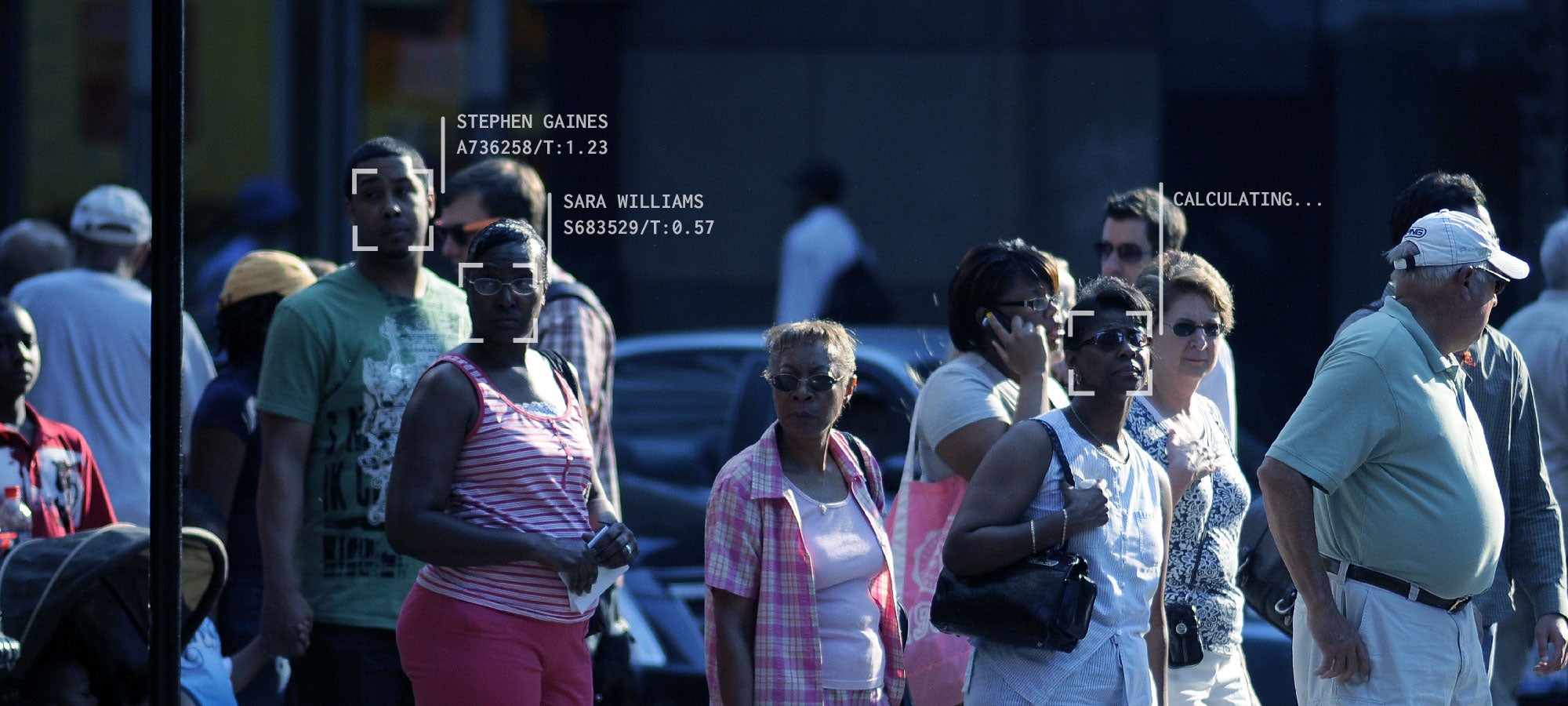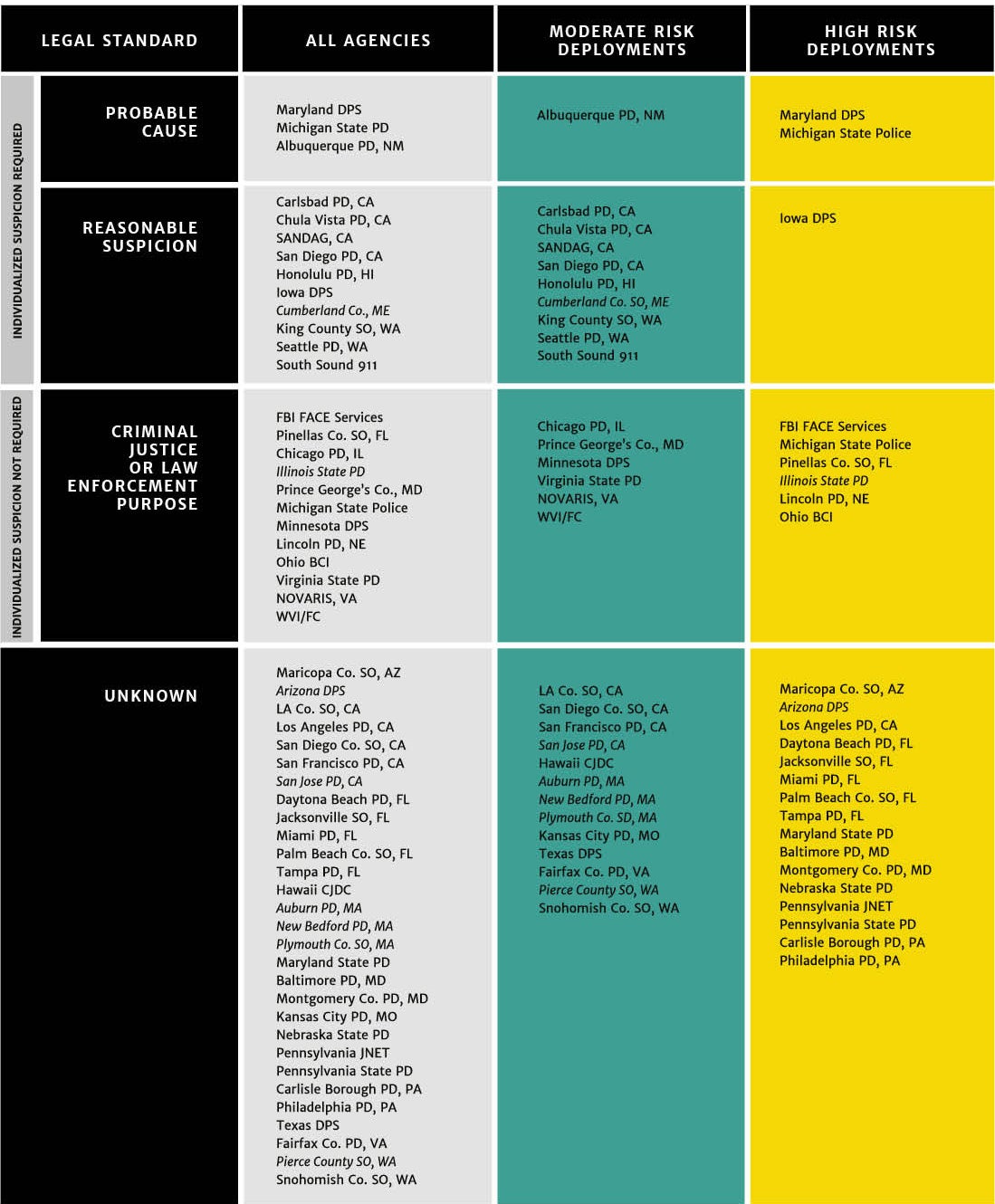The two district courthouses serving Cheltenham Township, Pennsylvania, adjudicate landlord-tenant disputes and municipal ordinance violations and also hold preliminary hearings and arraignments on more serious criminal charges.102 Several years ago, the Cheltenham Township Police Department stationed officers outside a courthouse parking lot to “perform counter-surveillance”—taking photos of people attending the court hearing of an alleged gang member. These photos were then run through Pennsylvania's face recognition system, which searches state mug shots and, beginning in 2012, all 34 million Pennsylvania driver’s license photos.103 We do not know if the photos were taken of suspected criminals—or if they were just people who happened to be in the courthouse parking lot.
This may seem unremarkable: Surreptitious police photography is an established policing technique. While the Fourth Amendment protects us against “unreasonable searches and seizures,” it is unclear whether face recognition constitutes a “search.” (See Sidebar 3.)
Protections from “unreasonable searches and seizures” can originate in any of the three branches of government: the judiciary, the legislature, or the executive, which includes law enforcement. Instead of allowing those protections to grow old and out of date, however, legislatures across the country are passing dozens of laws restricting the use of 21st century tracking technology to monitor public conduct. When legislators have hesitated, state and federal courts have stepped in and interpreted the Fourth Amendment to require warrants and other protections.
Unfortunately, courts and legislatures by and large have not applied these protections to face recognition technology. In the absence of guidance from legislatures and courts, police departments have created systems that often fall short of the protections offered against other tracking technology.
- 102. Magisterial District Courts of Pennsylvania are courts of limited jurisdiction that handle landlord-tenant disputes, small claims of up to $12,000, summary offenses, municipal code violations, and preliminary hearings and arraignments in misdemeanor and felony offenses that will be tried in higher courts. Magisterial District Courts, County of Montgomery Magisterial District Courts, Montgomery County, http://www.montcopa.org/300/Magisterial-District-Courts (last visited Aug. 18, 2016). Cheltenham Township is served by Magisterial District Court 38-1-02 and 38-1-03. Magisterial District Courts, County of Montgomery Magisterial District Courts, Montgomery County, (Sept. 19, 2016), http://www.montcopa.org/DocumentCenter/View/10059 (last visited Aug. 18, 2016).
- 103. See Pennsylvania JNET, Pennsylvania Justice Network 2012–2013 Annual Report, Document p. 016738; Welcome to the JNET Facial Recognition System Slides (May 5, 2014), Document p. 010750.



